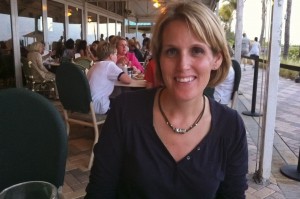- About Przyborski Productions
- Show Reels
- Misc Videos
- Introduction of 24P (from 2002)
- Americana
- Images from a Summer Carnival
- River Rafting
- Scenes from a County Fair
- America Lost
- Moments@24fps (1999)
- Behind-the-Scenes Prop38 (2000)
- 1991 Pittsburgh Penguins
- Barth Bartholomae (1997)
- Behind-the-Scenes Pagetime (1998)
- Frontier Telephone (2000)
- Time Capsule: GNC 1993-1996
- Glenn
- Jimmy D
- Map
- Contact Info
- Scrapbook
Just got back from Florida where I directed and photographed a new commercial for Boca Raton Regional Hospital’s amazing orthopedic services. We had a great crew from Miami who primarily work on the popular show, Burn Notice. Pittsburgh based, assistant director, Rich Schutte made the trip with us. We shot continuously from 6am to 4pm! I’ll post the new spot as soon as its edited.
The biggest trend in commercial production is to create images with very shallow, film-like depth-of-field. This “look” was easy with 35mm movie film. As a general rule, the larger the film frame or imaging device, the “tighter” the depth-of-field and more selective the focus. This contrasts with previous HDTV digital cameras that achieved sharp focus throughout the entire frame.
Although I love film and have shot over 2,000,000 feet of it… today’s budget for a typical spot doesn’t have the luxury of $10K to $20K for 35mm film stock, processing, HDTV transferring and sync-ups.
Using “film-like” shallow depth-of-field to separate actors or products from a scene’s background can now be achieved with new, cost-effective cameras from Sony and Panasonic. They use large scale digital imagers that approximate the size of 35mm film negative. Since these cameras record to solid state memory, there’s no added size, weight or expense related a tape mechanism.
I recently shot a series of commercials with Panasonic’s new AF100. I love the fact that all my Canon and Nikon 35mm lenses work perfectly with this camera. Plus, it will shoot 1080P, true slow-motion at 60 frames-per-second. I don’t have a lot in common with James Cameron, but we both agree that professional cameras need to be smaller and lighter. Technology marches on…
This BrabenderCox, Arena Football ad began airing right before Christmas. Since then we’ve had several emails and phone conversations asking how it was done. The interesting thing is that many of the scenes aren’t either video or film… they’re a series of still photographs, blended together to form a moving sequence.
At night, Pittsburgh is not a very bright city. To create the super luminescent “glow” of the city at night. Glenn Przyborski shot many of the scenes as 1/2 to 1 second time exposures. Using an intervalometer attached to a modified Panasonic GH1 camera, Glenn shot approx 300 digital exposures per scene. Using After Effects, these sequences of digital still images were frame blended, re-sized, then converted into 1080P high-definition video.
Phenomenon Post, visual effects supervisor, Thad Christen and digital graphic artist, Danny Johnson painstakingly rotoscoped the various buildings and objects to create multiple traveling masks. These masks allow the lightning and storm footage to replace the sky and create the illusion of various lights being turned off. The moving blur of the running football player was an actor filmed in slow motion on green screen using a RED One camera at WQED’s studio.
An effect driven spot is greatly enhanced by sound effects. Michael Goodis created original sound design and other audio effects that help “sell” the visuals.



